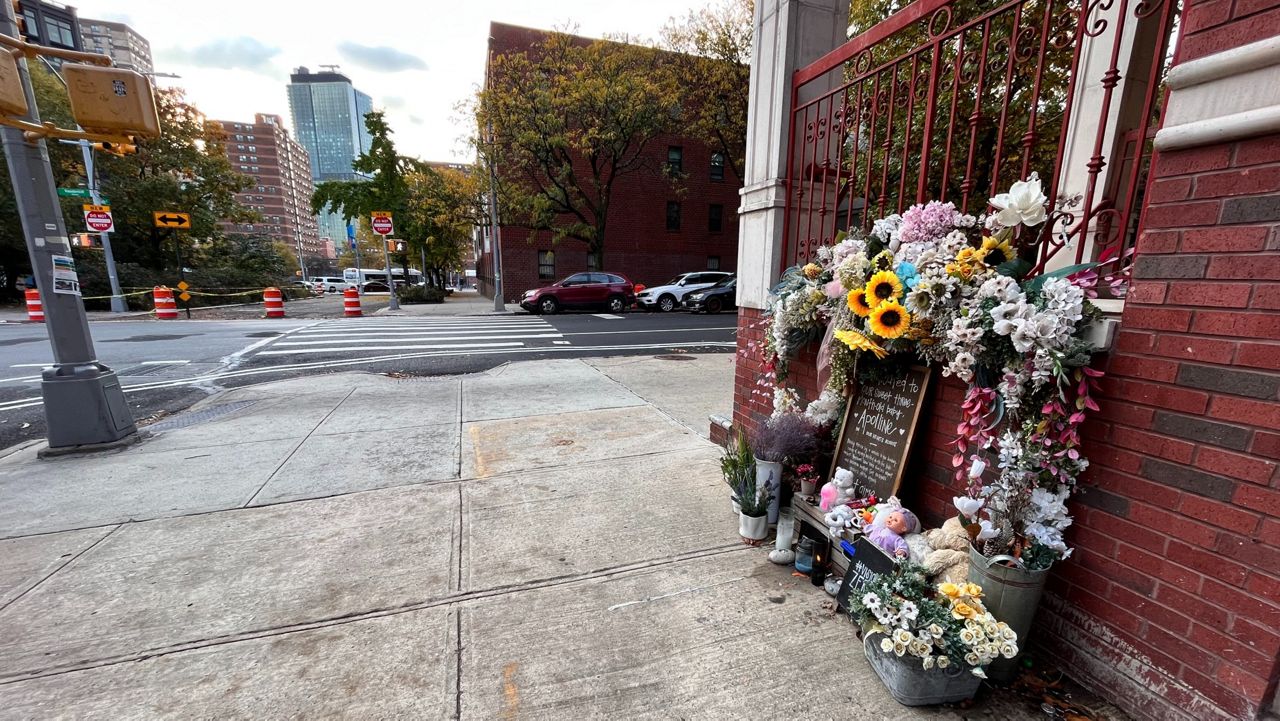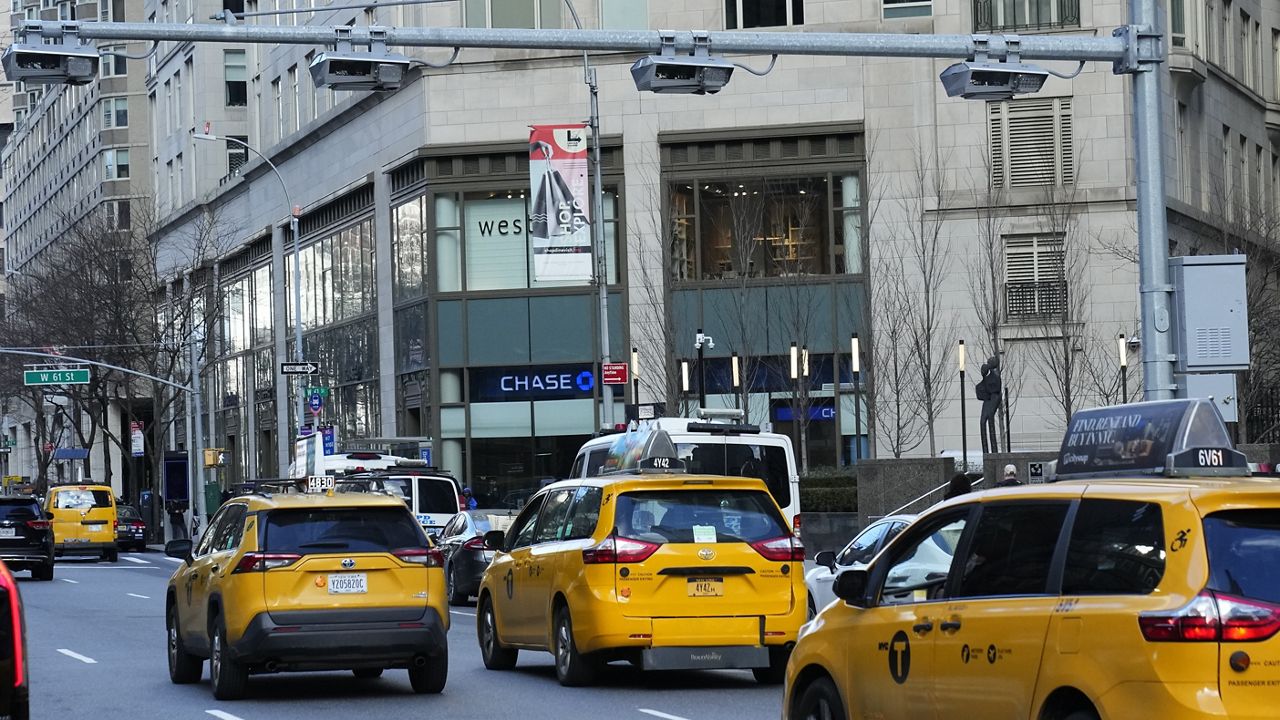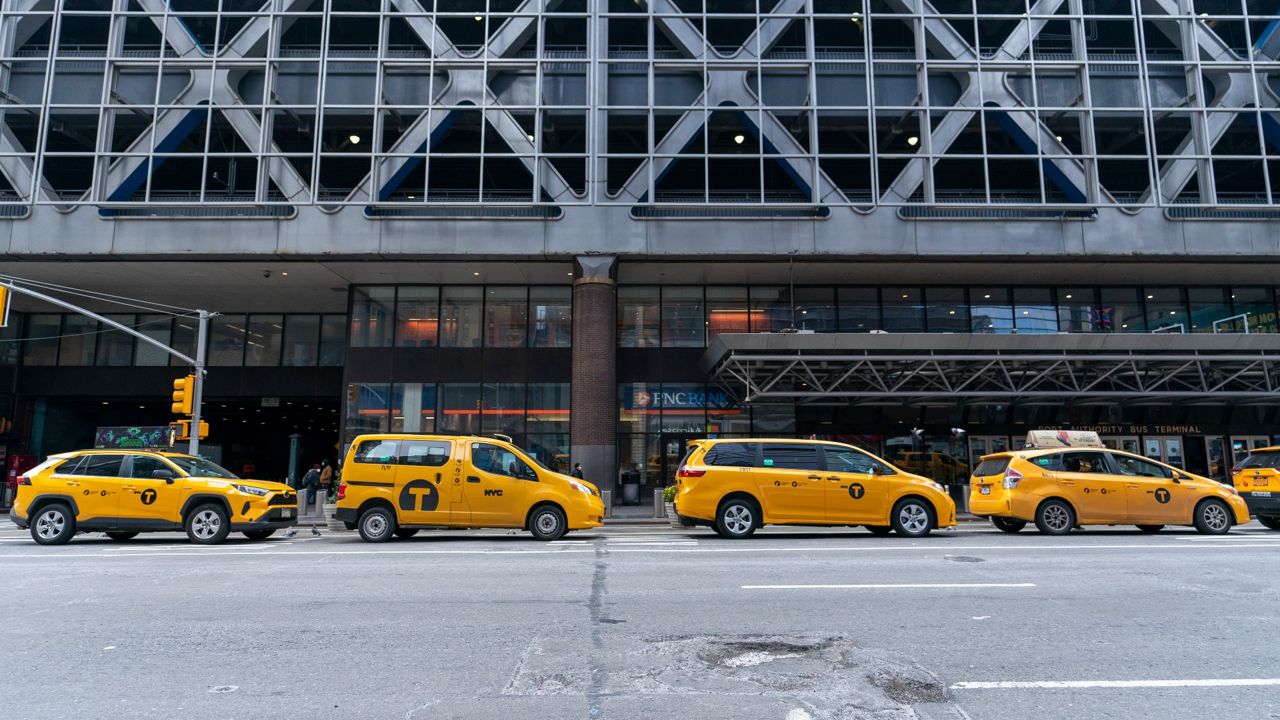A little more than a year ago, a deadly car collision at a Brooklyn intersection caused a tragedy that galvanized a neighborhood: A driver racing the wrong way on a one-way block collided with another car, pushing both vehicles onto the sidewalk and into a family of three.
The collision killed Apolline Mong-Guillemin, aged 3 months, and gravely injured her parents.
Now, at the urging of local residents and pedestrian safety advocates, the block is being transformed into a pedestrian plaza: Apolline’s Garden.
The new plaza comes as the city has seen a spike in child traffic deaths, and as agencies consider proposals to ease car traffic — or remove it entirely — in neighborhoods like SoHo, Flatiron and parts of Downtown Brooklyn.
Proponents of the plaza see it as a commonsense measure to calm the traffic off a busy thoroughfare, bring more open space to the neighborhood and honor Mong-Guillemin’s memory — even as some residents who live alongside the plaza say they feel left out of the planning process.
“We have all the tools that can prevent traffic violence,” said Danny Harris, the executive director of Transportation Alternatives, a pedestrian safety group. “Let this be an example of what's possible in a short amount of time to keep people alive, as opposed to celebrating somebody who's passed away.”
Traffic collisions have increased and led to more injuries in recent years, according to tallies by independent groups. A recent Transportation Alternatives report tallied 16 deaths of children under 18 this year, up from 6 in 2021, and found that the number of hit-and-runs resulting in a serious injury have risen to their highest point in recent years.
In the aftermath of the collision in the Fort Greene neighborhood of Brooklyn that killed Mong-Guillemin in September 2021, local residents quickly proposed a change to the area. Instead of allowing traffic between Vanderbilt Avenue and Fulton Street along Gates Avenue, they would end Gates at Vanderbilt, and turn the rest of the street over to tables, benches and planters.
Within months, community members had advanced a design created by Street Plans, an urban planning firm. In February, the city’s Department of Transportation signed off on it, according to Streetsblog, which has covered the creation of Apolline’s Garden extensively.
This past weekend, local residents gathered to begin painting the plaza, laying down a primer coat of white before marking arcs and circles in purple, yellow and blue. One girl pushed her paint roller while on inline skates.
“The crash that killed baby Apolline was the impetus that brought a lot of neighbors together,” said Sam Anderson, a volunteer with Clinton Hill Safe Streets, a group formed after the collision. “I quickly kinda snapped and had this realization moment that, that's not normal. Almost getting hit by a car every day is not normal.”
Anderson said his group wants to see lots of changes to the area: giving pedestrians a few seconds head start on green lights; extending curbs further into the street at crosswalks; and designated loading zones, to reduce double parking. Their big goal, he said, is to get a protected bike lane connecting Prospect Park to the Navy Yard.
While he applauded the city’s relatively quick turnaround on Apolline’s Garden, he said he is pushing the DOT and the city council to move faster on street safety.
“As an activist, my job is almost to not be satisfied,” he said. “The DOT knows how to prevent these deaths, and they will keep happening unless they implement this infrastructure.”
Not every local resident has embraced the new plaza. Darryl Rock, a resident of the co-op that overlooks the block where Apolline’s Garden has been placed, said the families who live there were not consulted about the change.
They are concerned about nighttime disruptions from people sitting in the plaza, and the loss of parking spaces for elderly people who live in the building.
“We’re not opposed to spaces for people to get together. but you don't make that right outside of somebody's building without even talking about it,” Rock said.
In October, the DOT posted a new plan for the area that reverses an earlier proposal to make the block on the other side of Apolline’s Garden a one-way street, preserving more car space.
Rock said he and his neighbors were considering potentially suing the city over the change.
“We know that change is gonna happen,” he said. “But at the same time, we need to be at the table.”
Vincent Barone, a spokesperson for the DOT, said in an emailed statement that the agency is adding other safety features to the area, including five curb extensions, and that it plans to build more extensions next year.
“DOT is focusing on building the grassroots community supported Gates Plaza which honors Baby Apolline and creates new public space and safer streets for the community,” Barone said in an emailed statement.
Mong-Guillemin’s parents, Julien Mong and Marion Guillemin, have sued the driver who allegedly caused the crash that led to Apolline’s death, as well as the city and the police department.
They allege that the city was negligent by allowing the intersection to remain unsafe, and that the NYPD failed to arrest the driver, Tyrik Mott, despite him having dozens of driving violations.
A representative for the city's law department declined to comment. In a previous statement on the lawsuit to Streetsblog, a law department spokesperson said, “The crash that killed baby Apolline was a horrific tragedy. We will review the case and respond in the litigation.”
Harris said he hopes that the city’s quick movement on Apolline’s Garden can be a sign that it is possible — even amid an economic downturn, and with high vacancy rates in city agencies — to add street features aimed at protecting pedestrians and cyclists in every neighborhood.
“The city has the resources. They have decades of know-how,” Harris said. “There’s no reason we can't scale this work to every corner of the city.”






